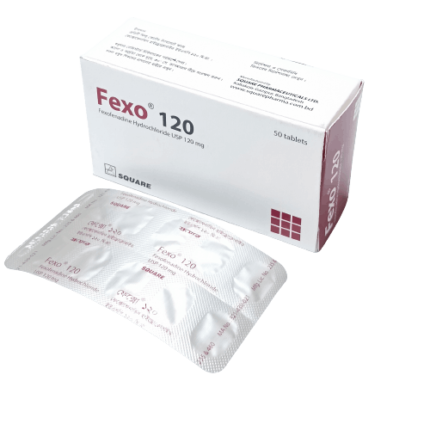Lamogin 25
100.00৳ Strip(10)
- Lamogin is an antiepileptic drug used to treat epilepsy and bipolar disorder.
- It is indicated for partial-onset seizures, tonic-clonic seizures, and generalized seizures in Lennox-Gastaut syndrome.
- Lamogin is available for adjunctive therapy in patients aged 2 years and older and as monotherapy for those aged 16 and older.
- It stabilizes neuronal membranes by inhibiting sodium channels, preventing excitatory neurotransmitter release.
 Brand
Brand
|
Incepta Pharmaceuticals Ltd |
|---|---|
 Generics
Generics
|
Lamotrigine |
 Type
Type
|
Tablet |
Indications
Lamogin is a prescribed antiepileptic medication (AED) used for the treatment of:
- Epilepsy – As an adjunctive therapy for patients aged 2 years and older:
- Partial-onset seizures
- Primary generalized tonic-clonic seizures
- Generalized seizures in Lennox-Gastaut syndrome
- Epilepsy – As monotherapy for patients aged 16 years and older.
- Bipolar Disorder – For adults aged 18 years and older.
Always follow the advice of a registered healthcare professional before using this medication.
Description
Lamogin (lamotrigine) is a phenyltriazine-based antiepileptic drug used to manage various forms of epilepsy and bipolar disorder. It works by inhibiting voltage-sensitive sodium channels, which stabilizes neuronal membranes and reduces the release of excitatory neurotransmitters like glutamate and aspartate. This action helps control seizures and may also benefit patients with mood disorders such as bipolar disorder.
Pharmacology
While the exact mechanism of action of lamotrigine remains incompletely understood, its effects are believed to be similar to those of other antiepileptics like phenytoin and carbamazepine. Lamotrigine acts by stabilizing neuronal membranes and inhibiting the release of neurotransmitters that can trigger seizures. It binds to sodium channels in a manner similar to local anesthetics, which might also explain its use in treating certain neuropathic pain conditions. Additionally, lamotrigine shows weak interactions with serotonin, dopamine, and other receptor systems.
Dosage & Administration
Epilepsy
For Patients Aged 12 and Older:
- Weeks 1-2:
- Without Carbamazepine, Phenytoin, Phenobarbital, Primidone, or Valproate: 25 mg/day
- With Valproate: 25 mg every other day
- With Carbamazepine, Phenytoin, Phenobarbital, or Primidone (no Valproate): 50 mg/day
- Weeks 3-4:
- Without Carbamazepine, Phenytoin, Phenobarbital, Primidone, or Valproate: 50 mg/day
- With Valproate: 25 mg/day
- With Carbamazepine, Phenytoin, Phenobarbital, or Primidone (no Valproate): 100 mg/day (divided doses)
- Maintenance Dose:
- Without Carbamazepine, Phenytoin, Phenobarbital, Primidone, or Valproate: 225–375 mg/day (divided doses)
- With Valproate: 100–200 mg/day (1 or 2 divided doses)
- With Carbamazepine, Phenytoin, Phenobarbital, or Primidone (no Valproate): 300–500 mg/day (divided doses)
For Pediatric Patients Aged 2–12 Years:
- Weeks 1-2:
- Without Carbamazepine, Phenytoin, Phenobarbital, Primidone, or Valproate: 0.3 mg/kg/day (1 or 2 divided doses)
- With Valproate: 0.15 mg/kg/day (1 or 2 divided doses)
- With Carbamazepine, Phenytoin, Phenobarbital, or Primidone (no Valproate): 0.6 mg/kg/day (divided doses)
- Weeks 3-4:
- Without Carbamazepine, Phenytoin, Phenobarbital, Primidone, or Valproate: 0.6 mg/kg/day (2 divided doses)
- With Valproate: 0.3 mg/kg/day (1 or 2 divided doses)
- With Carbamazepine, Phenytoin, Phenobarbital, or Primidone (no Valproate): 1.2 mg/kg/day (divided doses)
- Maintenance Dose:
- Without Carbamazepine, Phenytoin, Phenobarbital, Primidone, or Valproate: 4.5–7.5 mg/kg/day (max 300 mg/day in 2 divided doses)
- With Valproate: 1–3 mg/kg/day (max 200 mg/day in 1 or 2 divided doses)
- With Carbamazepine, Phenytoin, Phenobarbital, or Primidone (no Valproate): 5–15 mg/kg/day (max 400 mg/day in 2 divided doses)
Bipolar Disorder
For Adults with Bipolar Disorder:
- Weeks 1-2:
- Without Carbamazepine, Phenytoin, Phenobarbital, Primidone, or Valproate: 25 mg daily
- With Valproate: 25 mg every other day
- With Carbamazepine, Phenytoin, Phenobarbital, or Primidone (no Valproate): 50 mg daily
- Weeks 3-6:
- Without Carbamazepine, Phenytoin, Phenobarbital, Primidone, or Valproate: 50–200 mg daily
- With Valproate: 25–100 mg daily
- With Carbamazepine, Phenytoin, Phenobarbital, or Primidone (no Valproate): 100–300 mg daily
- Weeks 7 and beyond:
- Without Carbamazepine, Phenytoin, Phenobarbital, Primidone, or Valproate: Up to 400 mg daily
- With Valproate: 100 mg daily
- With Carbamazepine, Phenytoin, Phenobarbital, or Primidone (no Valproate): Up to 400 mg daily
Drug Interactions
Lamogin concentrations can be significantly affected by other medications:
- Increased levels: Valproate can double Lamogin’s concentration.
- Decreased levels: Carbamazepine, phenytoin, phenobarbital, rifampin, and estrogen-containing contraceptives can lower its effectiveness.
- Protease inhibitors like lopinavir/ritonavir and atazanavir/ritonavir reduce Lamogin exposure by up to 50%.
Side Effects
Common in Adults:
Dizziness, headaches, blurred vision, nausea, ataxia, and skin rashes.
Common in Children:
Vomiting, diarrhea, fever, abdominal pain, and tremors.
Pregnancy & Lactation
Lamogin falls under Pregnancy Category C. It is excreted in breast milk, so nursing mothers must decide whether to stop breastfeeding or discontinue the drug, weighing the benefits for the mother against potential risks to the infant.
Warnings & Precautions
- Rash: Discontinue if a rash develops.
- Blood disorders: Monitor for signs of blood cell abnormalities.
- Suicidal thoughts: Watch for changes in behavior.
- Meningitis: Be alert for symptoms of aseptic meningitis.
Use in Special Populations
Pediatric Use:
- The safety and efficacy of Lamogin for epilepsy have not been established in children aged 1–24 months.
- For bipolar disorder, its effectiveness for maintenance treatment in children aged 10–17 years has not been proven.
Overdose Effects
Overdose may result in symptoms like nystagmus, seizures, and coma. Immediate medical attention is required.
Therapeutic Class:
Primary Anti-Epileptic Drug
Storage:
Store Lamogin in a cool, dry place below 25°C and protect from light. Keep out of reach of children.













Reviews
There are no reviews yet.